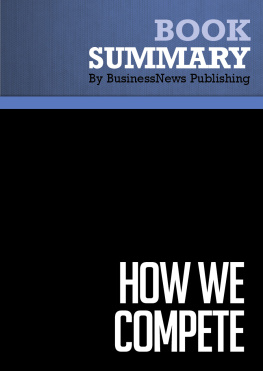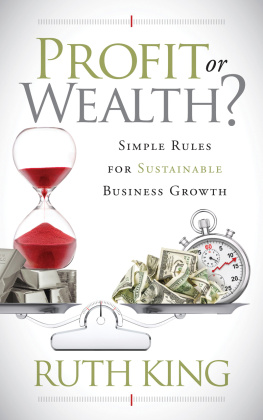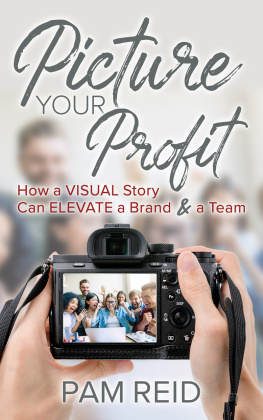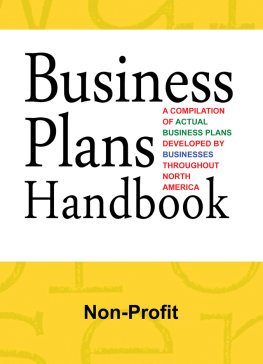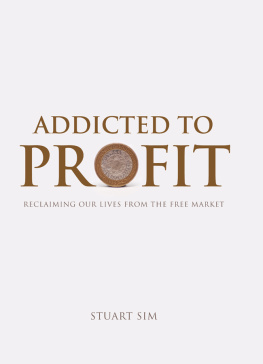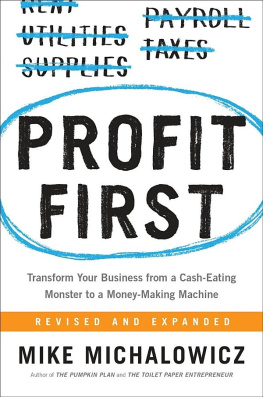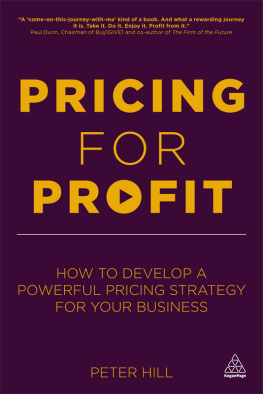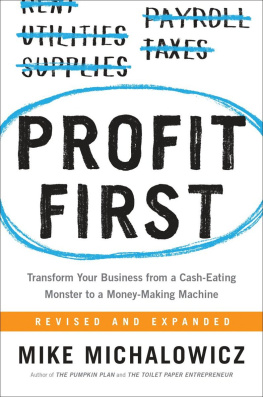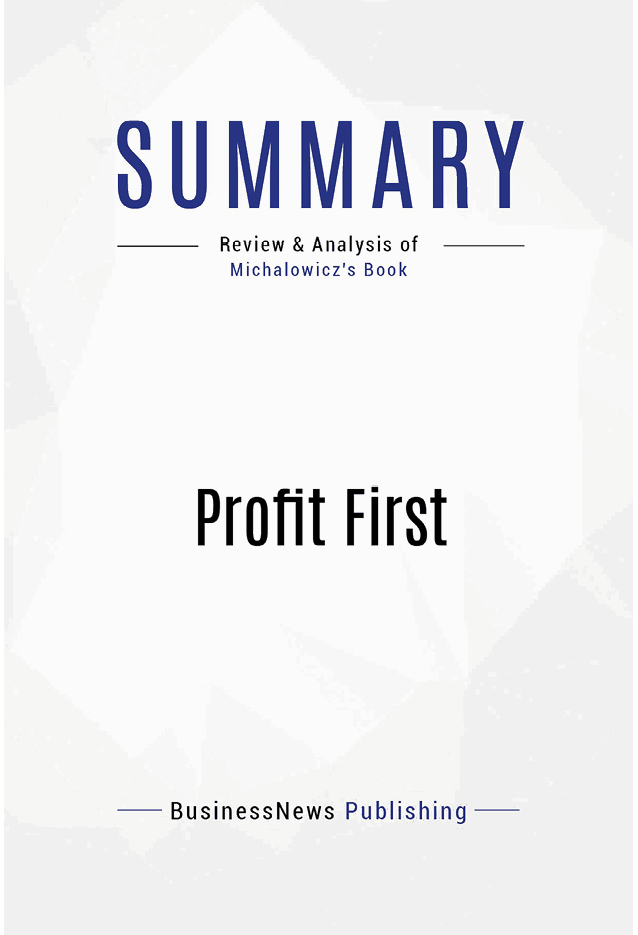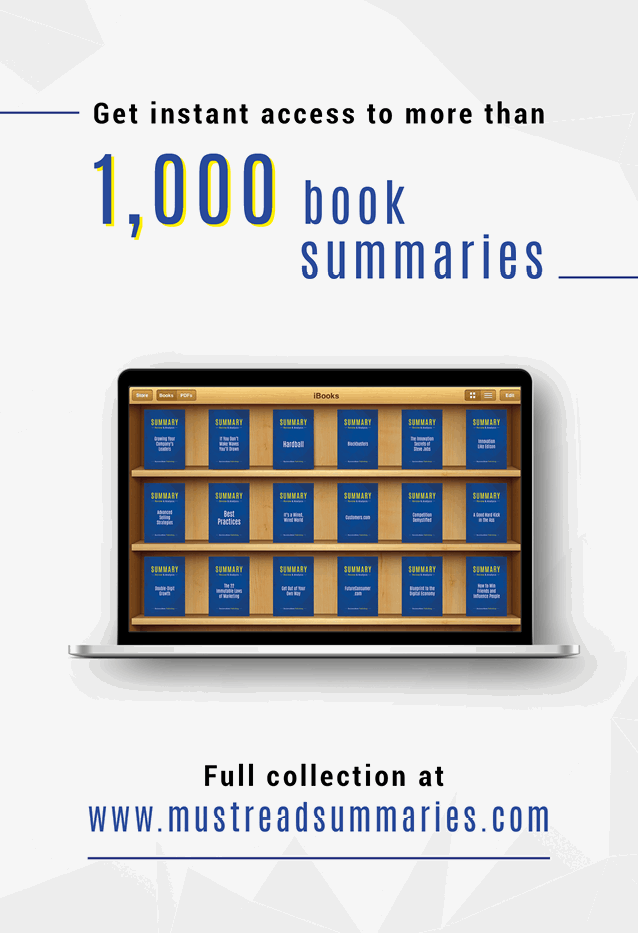Book Presentation: Profit First by Michael Michalowicz
Book Abstract
The GAAP (Generally Accepted Accounting Principles) formula for determining a business's profit since time immemorial has always been:
Sales - Expenses = Profits
While that formula is logically accurate, it doesn't really take into account human nature. Specifically, most small business owners do what can be termed "bank balance accounting" they look at their bank balance and make decisions based on the balance they see. That relegates profit to an afterthought something which will be left over at the end of the year with a bit of luck.
The Profit First Accounting (PFA) approach is to flip the standard GAAP formula this way:
Sales - Profit = Expenses
You take a predetermined percentage of profit from every sale first and then use only the remainder to pay for your expenses. Or put another way, with PFA, you secure your profit first and then run your business on the remaining cash.
PFA Take your profit first and then scale your expenses to match that goal
It comes down to this do you want to treat your profitability like leftovers, knowing you may only find scraps or an empty plate? Or do you want to get your full, healthy share right up front? I don't know about you, but I want to get my due portion first. I have taught the Profit First system to small companies and big companies, to private companies and even public companies. It works for all of them. And it will work for you. My commitment to you is that, if you follow the Profit First system, your business will become permanently profitable from the moment of your next deposit."
- Michael Michalowicz
About the Author
MICHAEL MICHALOWICZ is a serial entrepreneur and former small business columnist for The Wall Street Journal. By his 35th birthday, he had founded and sold two multi-million-dollar enterprises before losing everything by becoming an unsuccessful angel investor. He therefore started his third enterprise and worked to build it into a million-dollar venture. He formerly was a business make-over expert on MSNBC and is now a popular keynote speaker on entrepreneurship. He is the author of three books including The Pumpkin Plan and The Toilet Paper Entrepreneur. He is a graduate of Virginia Tech.
Important Note About This Ebook
This is a summary and not a critique or a review of the book. It does not offer judgment or opinion on the content of the book. This summary may not be organized chapter-wise but is an overview of the main ideas, viewpoints and arguments from the book as a whole. This means that the organization of this summary is not a representation of the book.
Summary of Profit First (Michael Michalowicz)
1. Draw a Line in the Sand
As any small business owner can tell you, it's not how much turnover you have that counts. It's how much of that money you get to keep. Draw a line in the sand and declare that from now on, you will run a profitable business and make everything else secondary to that goal. Every business can and will be improved when it uses the Profit First system.
Stitching together a business with nothing but a great idea, your unique talents and whatever resources you have at hand is most certainly a miracle. And it feels like one, too. Until the day you realize your business has become a giant, scary, soul-sucking, cash-eating monster.
- Michael Michalowicz
Sooner or later, almost every small business runs into cash flow problems. The universal answer to that is always "growth" you try and figure out how to make more sales, get bigger customers and bring in more revenue. However, growth is only half the equation. Even if you bring in more sales, it won't help you if your costs have also grown in sync with your drive to grow. The real key to making a small business healthy is more profitability, not merely growth.
Most small business owners end up using what can be termed "bank balance accounting". You look at your bank balance each day and decide whether or not you are doing okay. If there's money in the bank, you feel good and relax. If there's not, you get busy making more sales to try and generate cash. Psychologists call this the "Recency Effect" where you look at what you have right now and make decisions based solely and exclusively on that information.
Bank balance accounting really is human nature. It feels natural to look at what we have in the bank and use that to guide our perceptions and ultimately our actions. Unfortunately, even though you may have good intentions, operating your business based on how much cash you have in the bank really isn't helpful. You end up getting caught in a Survival Trap where you lurch from one emergency to the other.
The Survival Trap promises fast wealth, but when we're caught in it we rarely think about the massive cost of opportunity; and most of the time, we can't discern profitable income from debt-generating income. Instead of being the world's best at one thing, mastering the process of delivering perfectly and super-efficiently, we end up doing a greater variety of things and become less and less efficient at each step, while our business becomes more and more costly to run."
- Michael Michalowicz
Pure and simple the Survival Trap arises whenever you justify making money at any cost even if that means delaying the payment of taxes or suppliers for a time. Bank balance accounting adds to this illusion by reassuring you that as long as you have cash at hand, everything is going well. But the real culprit in this entire small business melodrama is the Generally Accepted Accounting Principle (GAAP) maxim:
Sales - Expenses = Profits
In the real world, here's how you probably think:
- This is my top line sales, the revenue I bring in.
- Subtract the wholesale costs of my products.
- Subtract all the other costs incurred in running the business: rent, utilities, insurance, commissions, etc.
- Next you pay taxes.
- Then you take your salary.
- Finally, you post whatever is left as your profit.
GAAP's fundamental flaw is, it goes against human nature. No matter how much we generate, we will always find a way to spend it all of it. And we have good reasons for our spending choices. Everything is justified. Everything is necessary. Soon enough, whatever money we had in the bank dwindles down to nothing as we struggle to cover every necessary expense. We get caught in the trap of sell-grow-spend, sell-grow-spend."
- Michael Michalowicz

GAAP teaches you to focus on sales and expenses first. If you sell enough, the logic goes, everything else will take care of itself. GAAP is also unnecessarily complex for a small business. In practice, GAAP is a formula for disaster when it comes to building a profitable small business because it leads to the Survival Trap.
To avoid the Survival Trap and turn your small business into a cash generating machine, you have to draw a line in the sand. Decide that starting today, you will run a profitable business and make everything else secondary to that goal. Make today the day you pledge to yourself that your business will focus first and foremost on profitability.


